Being a person of color is inherently political, especially when your identities have been stigmatized because of attitudes towards religion and immigration. We hold a depth of history within us, but get stuck in the same conversations. Our cultural climate has trapped minorities in the monolith and has made us accept being visible, even if we are not fully seen. We’re past representation, which can be performative, and in search of sustainable visions for change.
South Asian Muslim women have been central to this movement, through creating art and building communities which provide greater nuance to their stories. March 27 is Muslim Women’s Day, an important time to celebrate and elevate Muslim female voices, which feels especially relevant in a deeply political time amongst the South Asian community.
In December 2019, the Indian government passed the Citizenship Amendment Act, which fast-tracks the naturalization process for refugees of certain religions, excluding Islam. This is shocking because India has a secular constitution, and this is the first time that a Citizenship Amendment Bill has enforced religious-based criteria for citizenship. The law has led to mass protests in India, whose impact has been felt around the world.
To show our support for the community, we created the #UnapologeticallyMuslim photo series, an extension of the project Unapologetically Muslim in partnership with Brown Girl Magazine and Saba Zafar, with makeup by Shaza Rizvi, as a space for intersectional identity and self-definition.
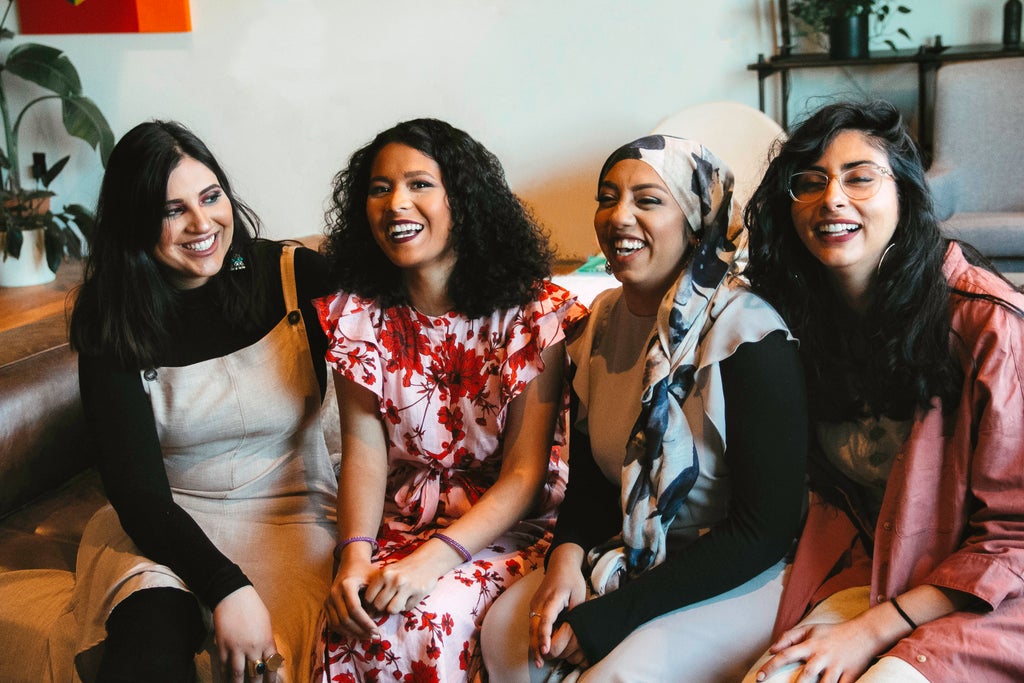
This focus was necessary because South Asians have not traditionally been centered in Western conversations about Muslim identity, even though South Asia has the largest population of Muslims in the world. To highlight their stories, this photo series features individual journeys with art, community and activism.
Minorities often find ourselves in an unfortunate cycle, because we are expected to address our visible identities through our art, regardless of how we identify on the inside. Even though people may realize our stories are valuable, it remains difficult to be seen or respected past the surface level. This has led many artists to remain in the same conversations about race, gender, and diversity because of systemic barriers that prevent them from exploring a deeper consciousness of identity.
With this series, we’re featuring specific conversations about the issues and experiences which the artists personally value, rather than what society considers relatable or profitable. With everyday life on pause due to COVID-19, it’s the first time that many of us have seen the whole world come together to heal. This cultural moment has illuminated how our society is often based on money and profit, but the best way to take care of each other is by recognizing our humanity, connecting across communities, and seeking comfort in art.
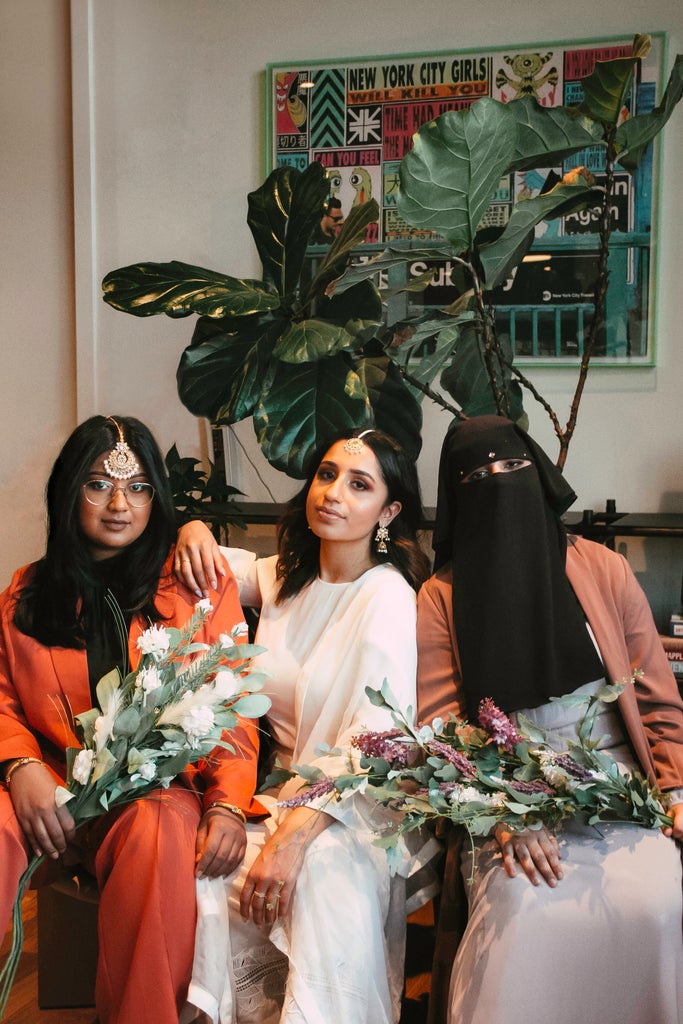
To illustrate the beauty and range of these stories, we’re featuring visionary creatives across art forms, from a niqabi photographer exploring creative expression for veiled women to an Indo-Caribbean writer documenting the diaspora to New York City’s first Bangladeshi female candidate for city council.
We’ve captured these artists in their creative process while wearing accessories from their culture with personal significance. Through their profiles, you’ll learn about their artistic journeys, visions for the future, and how their origins influence their work.
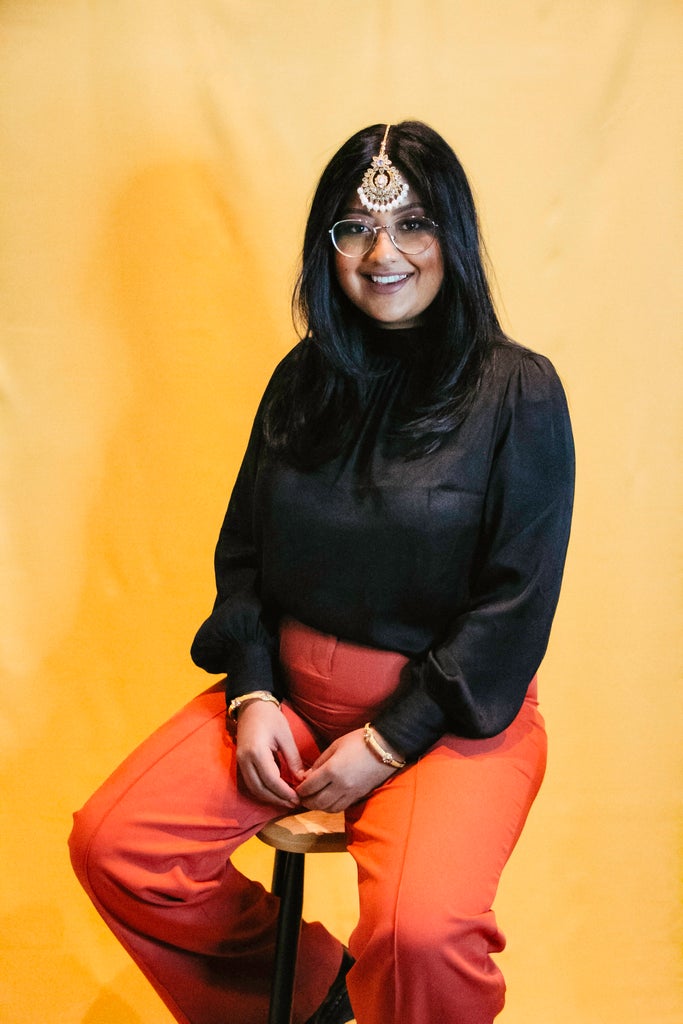
Shahana Hanif, 29, community organizer and candidate for NY city council
I’m a Bangladeshi Muslim woman born and raised in Kensington, the largest Bangladeshi community in Brooklyn. I’m running for City Council. I’m a brown woman in politics, which is a rarity. We’ve never elected a South Asian or Bangladeshi Muslim woman to the NYC Council. So, I’m navigating a space that is a first for me. Navigating politics in Brooklyn is an art form. I’m running a campaign that is creative and authentically me and true to my values of family, feminism, community and inclusivity. My politics for progress and freedom are beautifully interwoven with my Bangladeshi heritage and history and Muslim identity in Brooklyn. I’ve been intentional about setting a tone that is rooted in love, justice, and working-class power. This also means dismantling white supremacist values that have gated brown and black communities from participating in progressive politics.
When the Muslim Ban was instated in our country, I organized on my block. Countless families needed the IDNYC card, free legal services, and sanctuary. We needed arts and cultural programming. I did this work in coalition with organizations leading mass movement-building work in my neighborhood and across our city. What’s beautiful is that this work doesn’t rest on me alone — there are so many organizers who are building multiracial and intergenerational coalitions and challenging the status quo.
For me this work is lifelong. I hope that through the work, I am smiling and experiencing joy. Rest is important too. I remind myself that none of what I’m involved in is a quick fix. The road ahead is for freedom, and that requires being in community and on my block. I hope to love people as they come.
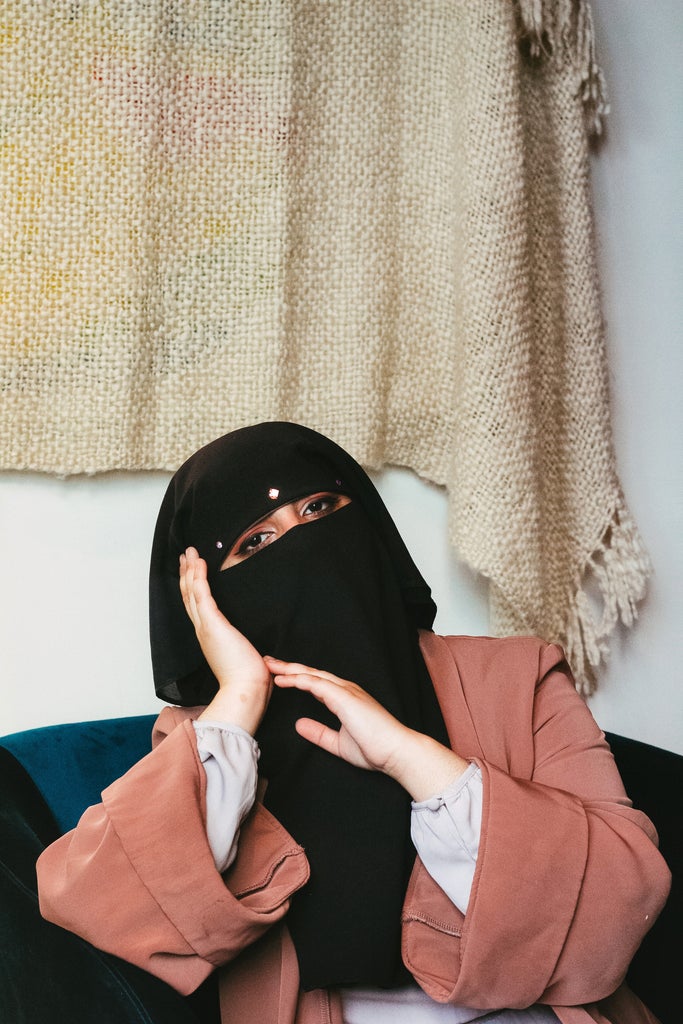
Faiza Ilyas, 21, photographer and model
I’m a Pakistani-American Muslim woman and a niqabi. The niqab is a religious symbol but I want to enhance it creatively and show people that it’s not a limitation. Originally, I began wearing the niqab for religious and cultural reasons and as I became more involved in the photography community, I found myself facing questions about my identity. It’s actually kind of funny if you think about it — society makes you think that niqabis should blend in, but I’m on the street with a camera taking pictures. I’ve gone through many forms of creative expression but most recently fashion design. After creating garments for a few showcases I realized that I love capturing fashion more than making it. I love shooting fashion that stands out — much like myself.
I want to build niqabi representation but we don’t have many niqabis in New York City who are willing to be a part of the media. Most wear it for religious reasons and would find it a huge step to come in front of the camera or put a creative take on it. That’s why I took a step and put myself in front of the camera; I want to include niqabi faces in this work. Through my art, I’m taking a conservative garment and placing it into a modern setting. I’m sharing the flexibility of self-expression — I don’t want to put a religious take on it. We have a lot of hijabi representation now, but the hijab altered as it progressed in the public eye. Over time people found it difficult to stick to the original garment, thinking it limits creativity and/or self-expression. When it comes to the niqab — in the name of representation, I want to make sure it’s not reduced over time and the modesty remains intact. I’m willing to do anything creatively with the niqab as long as we preserve its integrity.
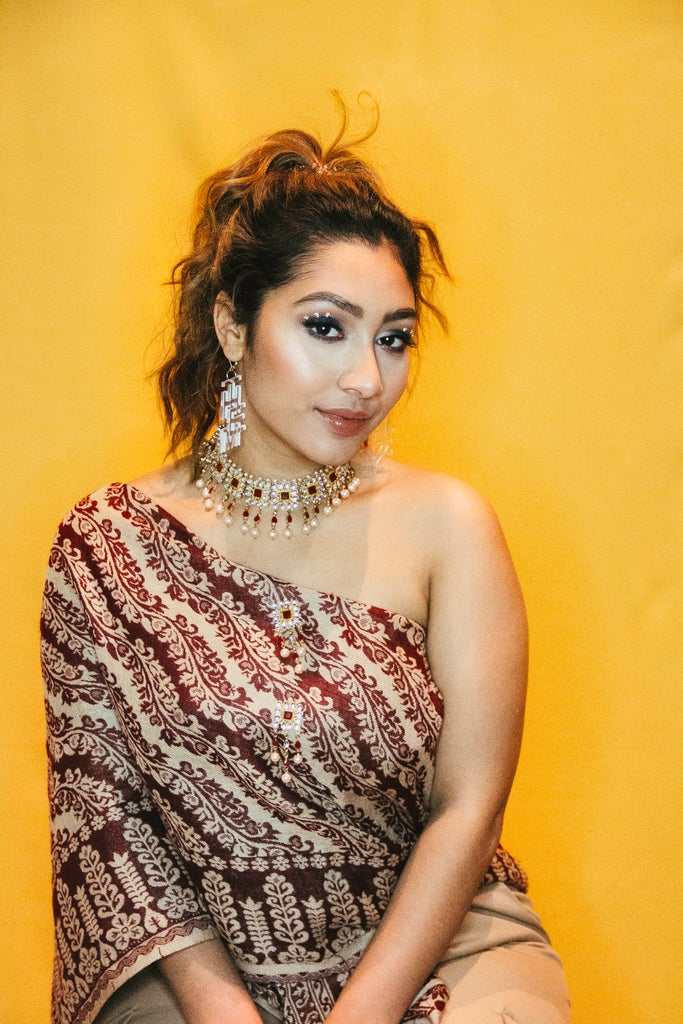
Nova A., 22, model, actor, activist and creative
I’m Bengali-American and I identify as a non-binary womxn. I am a creative and a thinker. You can trap me in four white walls with no window and I’ll be completely fine.
Modeling and acting help me be conscious of what I’m saying to the world without using my words. I also write to process intense moments that I’ve been through and have something tangible for myself to show that it happened.When I was younger, the standard was to be white so I grew up hating my identity and hating myself. I had to make up for a lot of time lost not loving all of myself. Now, reflecting the community and being unapologetically me is a huge part of what I do in the industry.
I have no choice but to be political. My people have been political from the beginning of their existence. That’s why I’m so involved and why I talk about what I do, because it’s all come full circle for me and affects me.
Our lack of representation made me think that Bengali people weren’t important, but when I look at present times, I see the power that we hold, especially potentially in politics. We’ve had to fight for so much to just exist, speak our mother tongue and become a sovereign state. I think our fight for liberty is as American as it gets.
For such a long time, most young people have felt powerless and like our voices don’t matter which is why we don’t vote. We’re starting to unlearn that and I love the anger that marginalized people and people of color have so that white cis men won’t be the standard. I’m really happy that we’re speaking out about it.
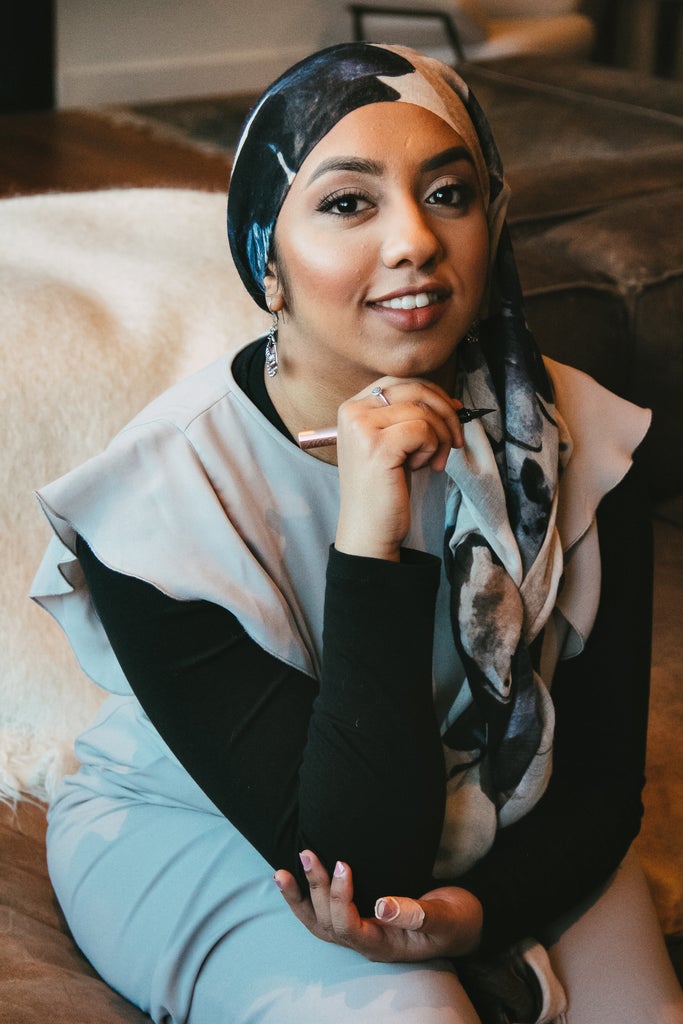
Gabrielle Deonath, 23, writer
I’m a hijabi Muslim Indo-Caribbean woman, but the word that speaks to the core of who I am is a writer. Writing is my way of processing the world around me, but it also helps me understand the world within.
The hardest part about growing up Indo-Caribbean was understanding my cultural identity. My family is from Guyana, the only country in South America where English is the national language. I believe the loss of native tongue has significantly eroded the connection to our ancestral roots. Most South Asians can trace their lineage back to a village, city or state, but many Indo-Caribbeans, like myself, are unable to pinpoint exactly what part of the subcontinent they’re from. The most I can say is that I’m Indian. My ancestors left nearly a century before Partition happened, when practically all of South Asia was referred to as India.Indo-Caribbeans have historically been excluded from the larger South Asian community, which has further fostered a feeling of deep disconnect. Because there’s no specific place I’m rooted, I’ve had to shape my cultural identity on my own. Dance has become another art form I can express myself through and also helps keep my South Asian heritage alive.
It’s rewarding when people of similar backgrounds can identify with my work and feel represented. However, I want my work to be most appreciated for its craft. I’ve learned that people can relate to your work even if they don’t share parts of your identity — people feel seen in ways you don’t expect. So I want to write stories with characters who look and sound like the people I know, stories that are culturally specific so minorities can see themselves represented, but ultimately stories that are just human at their core.
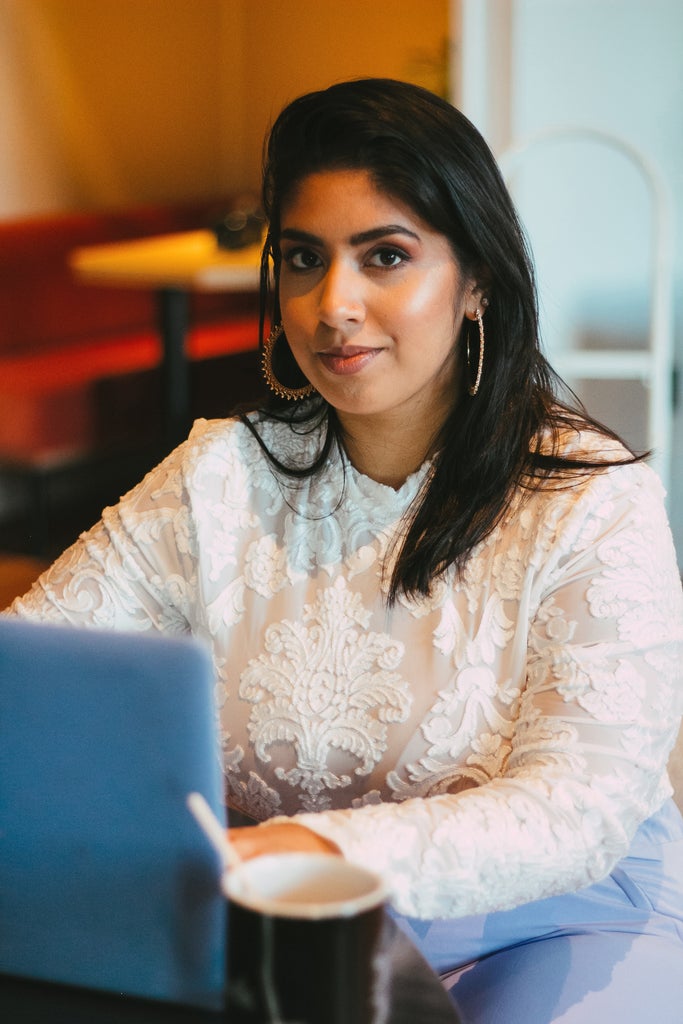
Zubi Ahmed, 30, comedian and filmmaker
I’m from a low-income neighborhood at the border of Brooklyn and Queens. Growing up, laughter was so important, because we didn’t have a lot. I was that cousin who would bring everyone into the room and do impressions of family members and dance. But when I was younger, I was always told to pipe down and keep to myself because girls are supposed to be demure, mysterious and practically invisible.
I have a loud laugh and a big body, and for most of my life I was taught to be ashamed of all of it. It is so special to be taking up space in the comedy scene as a fat Bengali Muslim woman and resisting society’s standards of what a woman should be.
It is a vulnerable act to be a comedian and let an entire crowd of strangers into your thoughts. We expect people of color to talk about their visible identities in their art, and don’t always support what we identify as on the inside. There are so many parts to us which people don’t see which might surprise them. The stories that we tell are untapped and can bring people together, even if it seems unlikely.
It’s been a really interesting time with COVID-19 because, as comedians, we have to find new ways to keep our creative flow going. Now that our usual platforms don’t exist, we’re learning how to use the Internet as our new comedy club. It’s challenging in a good way. Now that everyone is online, you’re going to see different sides of us. It’s basically a science project at this point.
I’ve lost a lot of gigs. I do freelance video producing as well, and all my money is gone for the next coming months, so that sucks, but I’m trying to look at it in a different way. It’s also been good for my creativity because I have fewer distractions and more time to work on my ideas. People have really come together to support comedians and artists, even financially, which has been amazing to see.
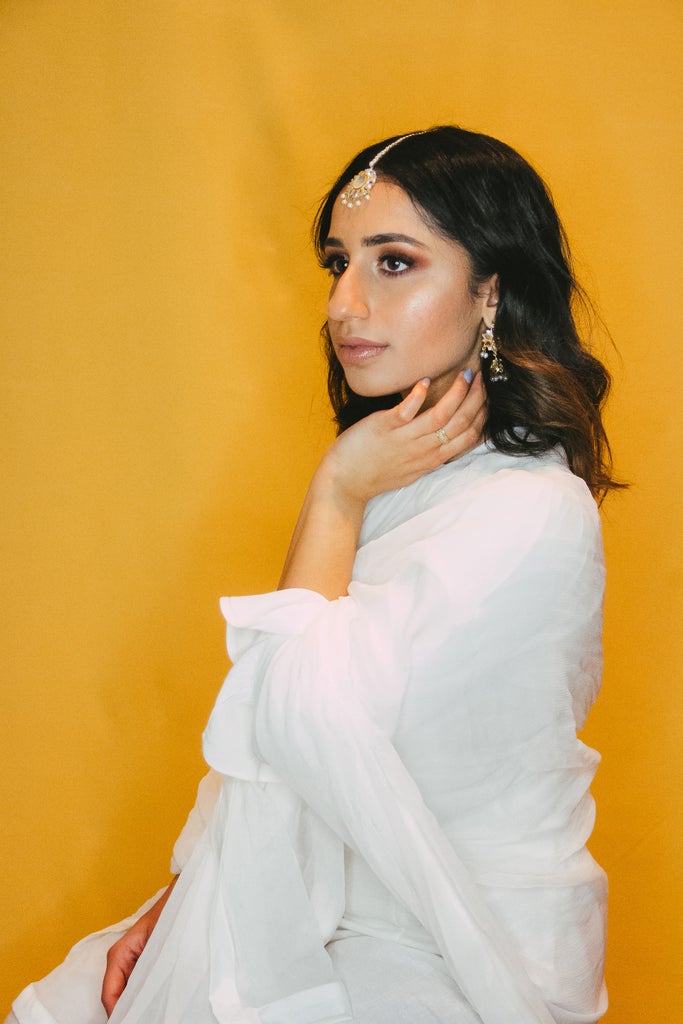
Tori Mumtaz, 24, photographer
I moved to New York from London when I was eight years old. I identify with a lot of things – I am Pakistani, British, American and Muslim. I am a woman and I’m also bi.
I’ve been interested in visual arts since I was young. To me, photography is a means to an end, not an end in itself. The camera is just one tool of many that I use to bring my vision to life.
Most of my work is portraiture, and I spend a lot of time on casting, styling, and set design. Unless you’re shooting yourself, portrait work is very social and deeply collaborative. I’ve had so many beautiful collaborations with such thoughtful and creative people (mostly women) and I’m forever grateful for that. Outside of branded work, the people I photograph are usually real friends. From the beginning, those relationships have been absolutely central. There’s a magic that happens between the photographer and the subject when the chemistry is right and your visions align. That’s the moment I live for.
I feel that the South Asian and Muslim diasporas are at a crossroads of many things. I want to embrace all of it through my work, and not just replicate popular imagery. We are past defining ourselves in dichotomies like East vs. West, and we are well past defining the Muslim community as primarily an immigrant community, as many often do. This erases the depth of Muslim history in America and erases Black American Muslims, who have been here since before the US became a country. The American Muslim community is so fractured along lines drawn by race and class – I want to change that. I want to hold space for all of the communities here.
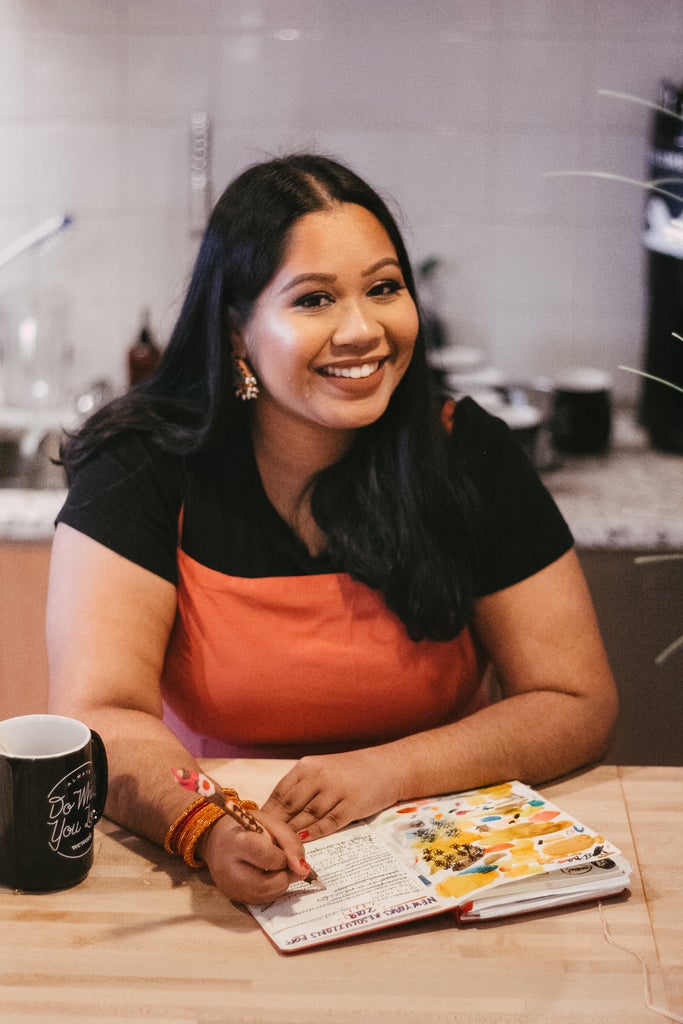
Fabliha Anbar, 20, writer and community organizer
I’m a Bangladeshi, plus size and queer woman. Growing up, it was really hard to deal with the Muslim community, because I was really lost in terms of my sexuality and had to force myself to be a certain way to please others. I used to see my size and sexuality as negative, but I’m at a time in my life where I’m proud to be all these things.
I express myself through community organizing, which I view as an art form, because you’re bringing people together. Growing up, I felt really isolated because I didn’t know anyone else who was queer and South Asian, so I co-founded the South Asian Queer and Trans Collective to create the community I wish I had and unite lost souls who also felt isolated growing up.
Storytelling is such a powerful tool to heal souls. Growing up, I never saw people be open about their sexuality so I hope I can do that for other people. Through my writing, I try to address curiosity and provide the knowledge to build empathy. You don’t necessarily need to have the same experiences to understand and learn.
Our team at the South Asian Queer and Trans Collective has basically shut down because of quarantine. I was really worried if our community members will feel safe, because a lot of queer people who come to our events want to escape their homes, where they often have to act a certain way for survival. I was almost ready to give up, but I realized that being at home doesn’t mean that our community can’t exist. In these desperate times, we still need communities and resources, so we’re planning virtual support groups on Zoom and even an online open mic.
This quarantine has shown me how community is beyond physical presence and all about genuine connection. As an artist, I’ve been inspired seeing people come together in a time of need. I’m trying to pace myself and take small steps, one day at a time.
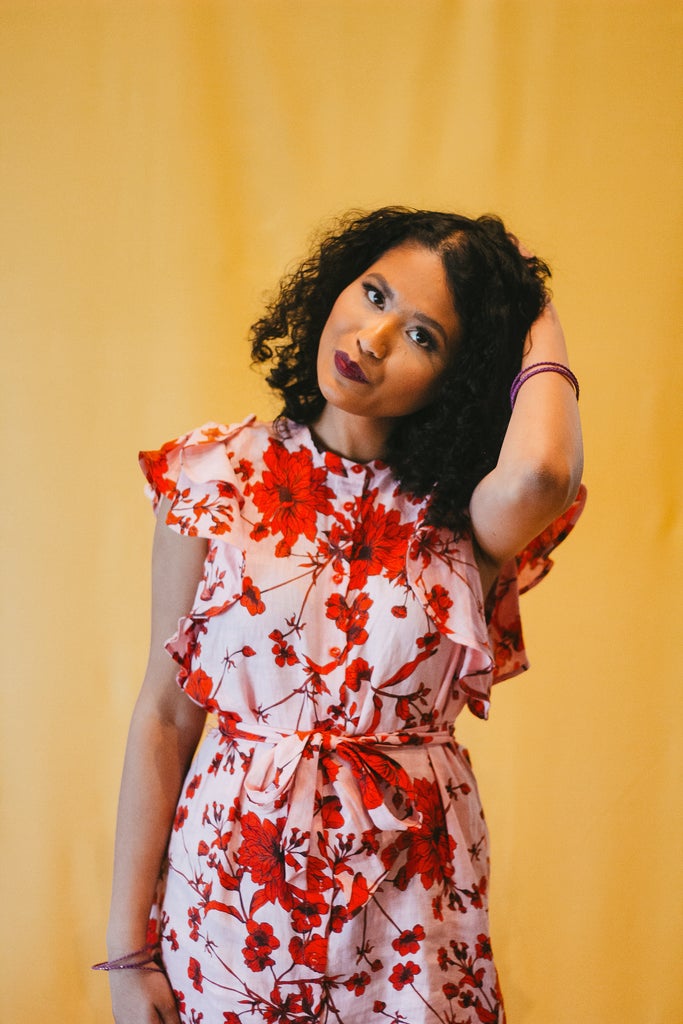
Suswana Chowdhury, 23, dancer, writer and video producer
I grew up as a first-generation Bengali American and, for a very long time, distanced myself from my culture. It wasn’t until I was in college that I finally started to understand the history of Bangladesh, how we fought to be able to speak our language, and about the sacrifices that our ancestors went through to have the right to express themselves in Bangla.
This has propelled my focus to increase awareness and representation of Bengali culture. I started out as a writer, but am now primarily a video producer and a dancer, trained in Bharatanatyam and Kathak Indian classical dance. I use dance to reflect the intermix of my upbringing and am currently working with a performing arts troupe to bring Bengali art into the mainstream.
My dream is to have my own production company where I can help fund and produce stories that might get rejected by a more mainstream production house because they don’t understand their cultural importance. I think it’s critically important to have us in positions of power where we can make decisions. If I can be in that seat, then I can help other writers, cinematographers and directors tell the stories that they want. I always want to be seen as somebody who is amplifying the voices of those who may not have the resources and the privilege of voicing themselves. The goal is to have people listen.
With our current state of crisis, it’s definitely been an unprecedented time. Most of the art I create is with other people, and all of my productions have come to a standstill. At a time like this, it is art that helps heal. We’re in quarantine, but people are still hungry for content. As creatives, we’re going to get creative and figure it out. However, we have to find a balance between wanting to produce content and recognizing that we need to heal and rehabilitate ourselves. Through any crisis, art has always found a way to survive. It’s a relief and it’s catharsis, so we’re going to make it through.
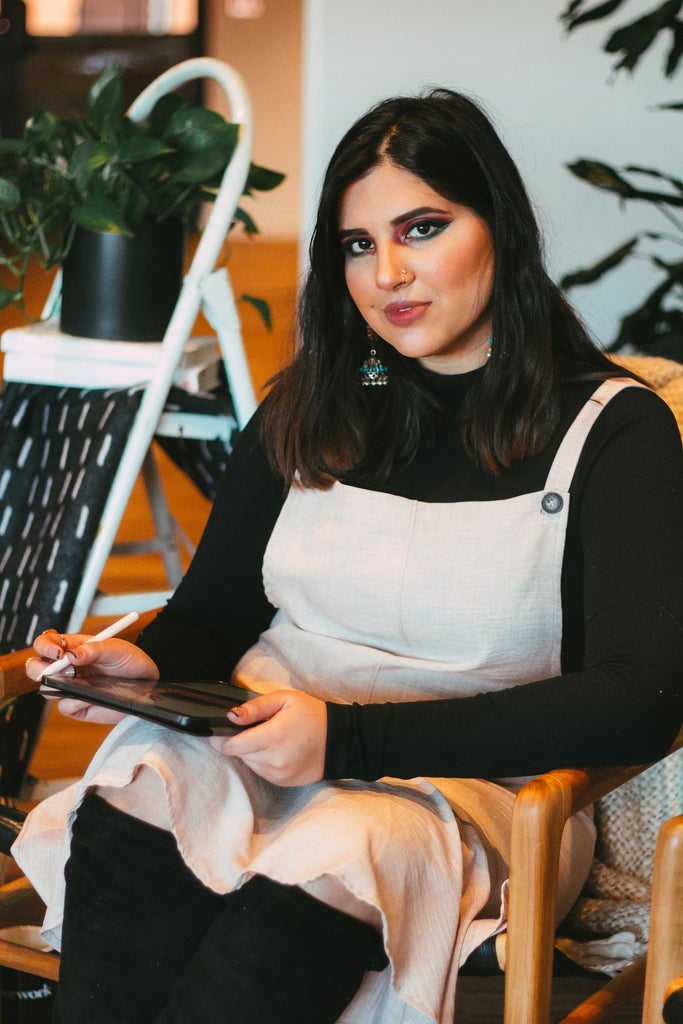
Sona Rehman, 26, painter and digital illustrator
I was born and raised in New Jersey, and identify as a Pakistani-American. I grew up in a predominantly white/upper middle class town and realized, at a young age, that people would never be able to see past my hyphenated identity. I never really felt like I fit in until I started to embrace my differences during my senior year in high school, and people began to recognize me for who I was.
I spent nearly half of my early life in Pakistan, and I have my parents to thank for that. If I had not been exposed to my Pakistani roots, I would have never been able to learn the languages of the country or build a bond with the culture.
I’ve been into art and illustration for as long as I can remember, and draw a lot of inspiration from Pakistani culture. A lot of people who have known me since I was really young often tell me that when I would come over, I’d ask for “paper and pencil.” And while the rest of the children would run around restless and wreak havoc, I’d just lay belly down in the causeway and draw.
I’m most drawn to surrealism because I feel that it peels back the layers of reality and exposes you to a different way of viewing what’s actually in front of you. It’s visually striking and you can have a lot of muted tones and contrast them with sharp and vivid color. Surrealism is hyper-realistic, so your brain recognizes different aspects of the image. It uncovers a hidden layer of meaning where you see reality through a warped lens and the truth is suddenly revealed. It also enables me, as the artist, to leave hidden messages and Easter eggs in the art itself, which makes it all the more appealing.
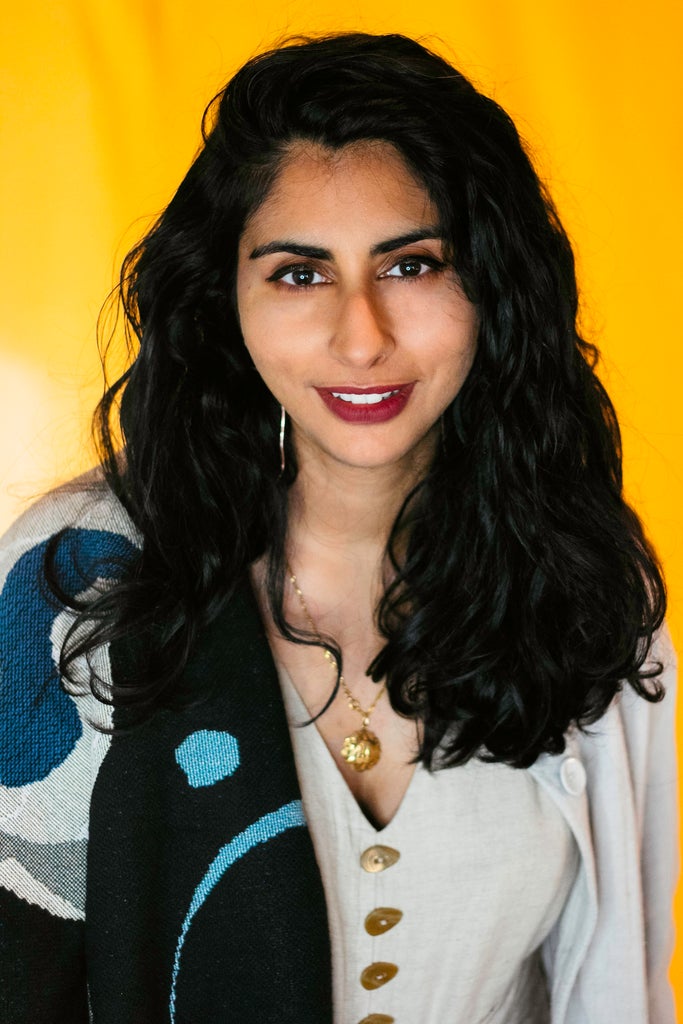
Myhra Mirza, 30, product designer and small business owner
I was born and raised in London but moved to Orlando, Florida at the age of 11. It was a sensitive time to emigrate, not just because I was at a delicate age, but my family and I are practicing Muslims who happened to arrive in the US the week of 9/11. At that age, I worried about people’s reactions towards Muslims. When classmates assumed I came from South America, I wondered if I should correct them.
As a kid, I was more cautious with my Muslim identity. Now I fully embrace all aspects of who I am: Muslim, Pakistani, British and American. I’ve learned to be more vocal about my needs without fear. I’m open about my faith and my need for a space to pray at work.
I am someone who generally loves to create. I am a product designer by trade, but from a young age, I loved to draw. Recently I used that skill to create my own company of multipurpose prayer mats called Niyya, the Islamic word for intention. I wanted to build a brand around the concept of intention and how that can vastly differ from owner to owner. Niyya can be used as a mat, blanket, shawl, or otherwise – the intention can be spiritual or practical.
It was important to me to design something thoughtful for the Muslim community, not just using my culture in visual design but also using design as a tool and a complement to my faith. Growing up, our differences were brought to attention in a more negative way, so the work I’m doing is a way to create mindful conversations between different communities. I hope my products allow people to learn more about Islam and the Muslim community as they integrate Niyya into their day-to-day lives.
R29 is proudly partnering with MuslimGirl.com to celebrate the fourth annual #MuslimWomensDay on March 27 by highlighting the real voices of Muslim women in 2020. This year’s theme is “Autonomy,” from redefining self-isolation to creating space in the narratives for voices that aren’t always allowed to speak for themselves.
from refinery29
How South Asian Muslim Women Are Reclaiming Their Stories
![How South Asian Muslim Women Are Reclaiming Their Stories]() Reviewed by streakoggi
on
March 27, 2020
Rating:
Reviewed by streakoggi
on
March 27, 2020
Rating:




